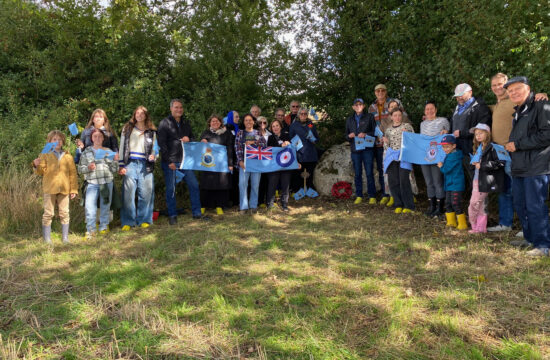By Emily Stonehouse
“Boat wakes have changed, and our lakes have noticed,” said Paul MacInnes, chair of the Haliburton Property Owners Association (CHA). “We have to discuss the risk that these monster trucks of the lakes pose to our lakes.”
MacInnes was speaking to a group of avid lake-lovers during the annual CHA meeting on May 3. During the half-day event, talks around proper septic care, loon preservation, and algae blooms were presented.
But nothing hit home harder than the discussion around boat wakes. According to the presentation, boat wakes make up to 70 to 90 per cent of energy on local lakes. Those are waves, created artificially with boats in an effort to allow lake surfers to ride in the wake.
The boats themselves are deep v-shaped vessels, weighing between 3000 to 5000 pounds. They are built with wake-enhancing technology, such as shapers and wedges, and have 720 gallon internal ballasts.
There are two desired sports with the waves: wakeboarding, where the rider trails the boat with a tow line, and rides the low waves behind the boat, or wake surfing, when the driver makes bigger waves, allowing the rider to drop the tow – closely resembling ocean surfing.
“So what’s the big deal?” posed MacInnes. While he noted that wind also creates energy and movement on the lakes, nothing comes close to the impact that the wake boats have on the natural shoreline. “Kashagawigamog is losing a couple of feet of shoreline each year,” he said, noting the unnatural erosion caused from the artificial wakes.
He noted that the disappearing shorelines have an impact on property values, economic stability, and wildlife habitats. “What will happen if our loons disappear, and we don’t have the call of the loons anymore?” he asked the concerned crowd.
And MacInnes wasn’t the only one with worries around wakes. A whole team of individuals have taken it upon themselves to dig deeper into the implications of these “monster trucks of the lakes”.
As the science started to point towards the boats being far more than a common annoyance to the generally tranquil lake life, a Safe Lakes Coalition has been formed, from concerned individuals across the country. They have partnered with researchers from universities and scientific programs to showcase the imbalance of risk versus reward when it comes to using wake boats on lakes.
“This is an unmitigated disaster” said Dr. Timothy James, who sits on the CHA, as well as the Safe Lakes Coalition. “We haven’t seen waves this size since the last ice age.”
And the large scale waves do more than lap away at the shoreline. They also cause issues under water. With the oversized propellor, often tipped at a low angle to allow for the waves to erupt out the back, the sediment that has settled into the bottom of the lakes is blown around. This causes an imbalance to the lake nutrients, as well as posing a risk to an increase in blue-green algae, which instantly impacts lake health, the ability to swim, and property values.
The wakes also kill or hurt birds, fish, and a variety of aquatic species, drastically impacting the holistic ecosystem of our lakes.
Beyond lake health, MacInnes also noted that wake boats play a part in the overall enjoyment for others on the lake, often tipping or crashing with non-motorized vessels, or damaging docks with the unprecedented waves.
In response to the changing nature of lake recreation, the organization Safe Quiet Lakes will be launching a public survey on June 17. This will be the fourth survey over the past 14 years, tracking activities, perceptions and concerns of lake users. It’s the largest survey of its kind known to date, covering the regions of Haliburton County, Muskoka, and Georgian Bay. This year’s survey will focus specifically on enhanced wakes, and possible solutions that can be put in place, so everyone can enjoy the health of our local lakes for a long time.
The online survey is available for anyone to see, and can be found at safequiet.ca. Survey results will be accepted until July 21.










